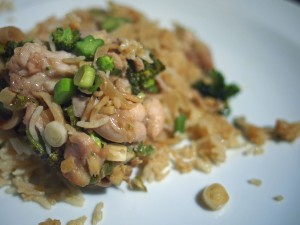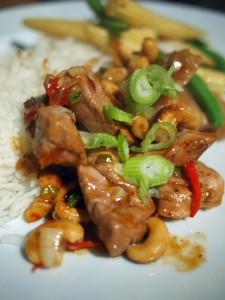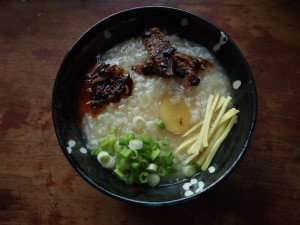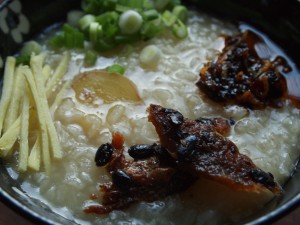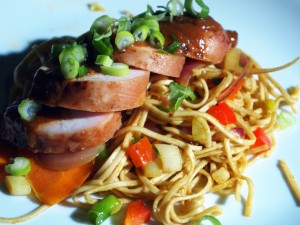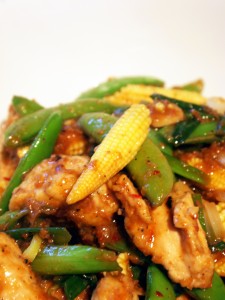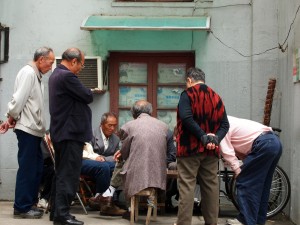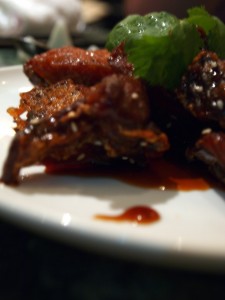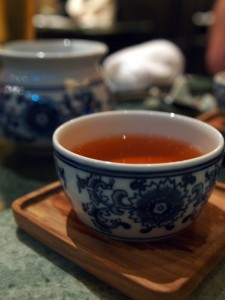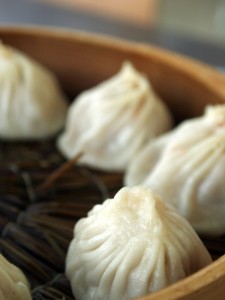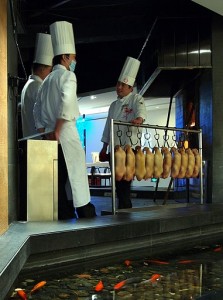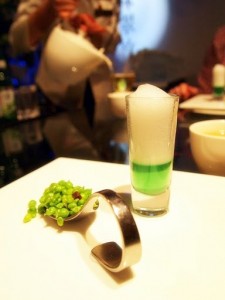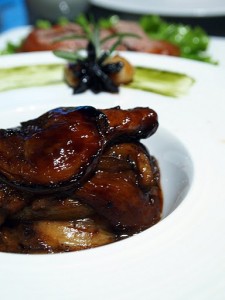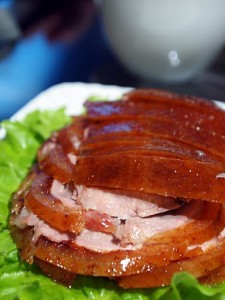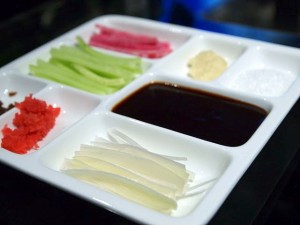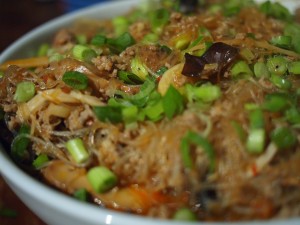
The name of this Szechuan dish is one that’s always confused me. There are, most emphatically, no ants in it; no woody bits either, unless you’ve failed to soak your dried mushrooms properly. I’ve heard suggestions that the bits of minced pork resemble ants and the glass noodles a tree. Whoever came up with that one had either been at the opium pipe, or had spent his life locked up somewhere where there are neither ants nor trees. There are other, even more unappetisingly named Szechuan dishes out there: husband and wife offal, strange-taste pork, pock-marked old woman’s bean curd. Struggle past the names – they all taste great. Szechuan cuisine lays all its emphasis on intense chilli spicing, and salty, savoury flavours.
Peculiar name aside, this makes for a terrific main dish, which you should serve with some rice to soak up the sauce. It’s important that you get your hands on glass noodles (sometimes called bean-thread or pea-thread noodles) rather than rice noodles when you cook ants climbing a tree. Their texture, slippery and glassy, and not particularly absorbent, is an important part of this dish. As always with a stir fry, make sure all your ingredients are chopped and ready to hit the wok as soon as you start to cook; things move quickly here.
To serve 6 (this also freezes well, so it’s worth making plenty even if you’re not serving that many people) you’ll need:
450g minced pork (I like a mince that’s not too lean here)
200g dry weight glass noodles
½ teaspoon salt
1 tablespoon sugar
1 teaspoon cornflour
75ml Chinese rice wine
12 spring onions
1 piece ginger about the size of your thumb
4 fat cloves garlic
200ml chicken stock (you can use half stock, half soaking liquid from your mushrooms if you prefer)
6 large, dried shitake mushrooms
6 dried cloud-ear mushrooms (sometimes sold as Chinese black mushrooms)
1 tablespoons chilli bean sauce
2 tablespoons shredded bamboo shoots preserved in sesame oil (optional – don’t worry if you can’t find these)
1 teaspoon Chinese chilli oil (look for a jar at your local oriental supermarket, and use more if you like things extra-spicy – I used about 3 heaped teaspoons in mine, but I have an asbestos tongue)
3 tablespoons dark soy sauce
6 tablespoons light soy sauce
1 tablespoon sesame oil
1 tablespoon ground nut oil
Combine the pork with the sugar, salt, rice wine, cornflour and one tablespoon of light soy sauce in a bowl, and set aside for half an hour while you prepare the other ingredients.
Soak the mushrooms for at least 20 minutes in freshly boiled water (I like to soak shitakes for an hour or more for the sake of texture; the cloud ears won’t need so long). Chop the spring onions, keeping the white and green parts separate. Dice the garlic and ginger finely. Pour boiling water over the noodles, soak for 10 minutes and then drain. Remove the mushrooms from the soaking liquid and slice them into fine strips, discarding the woody stalks of the shitakes.
Heat the oil until it starts to smoke in a wok, and throw in the garlic, ginger and the white parts of the spring onions. Stir fry for a few seconds until the aromatic ingredients start to give up their fragrance, and tip the contents of the pork bowl into the wok. Stir fry until the pork is browning evenly, and add the mushrooms to the wok with the bamboo shoots, stock, chilli bean sauce, chilli oil and soy sauces. Stir well to combine everything and add the noodles, stir again until the noodles are dispersed evenly through the wok, and turn the heat to medium. Allow the dish to bubble away until the sauce has reduced by about a third (a mixture of absorption and evaporation in this dish means this won’t take long). Remove from the heat and stir through the sesame oil and the green parts of the spring onions. Serve immediately with rice.

